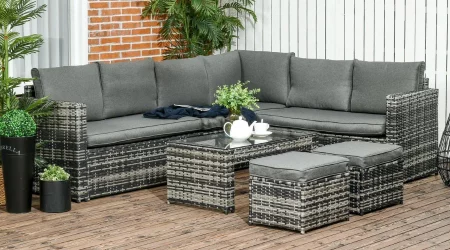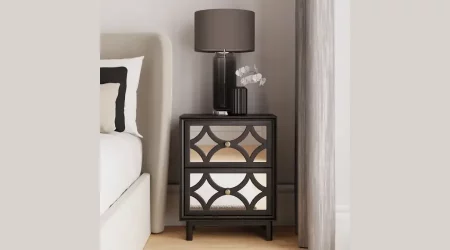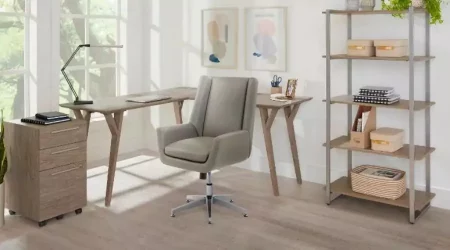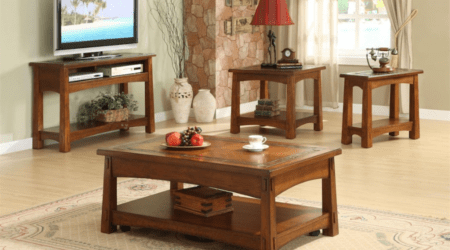Choosing furniture for your home can be an exciting and daunting task. With so many options available, it can be challenging to know where to start. Whether you’re moving into a new home or looking to update your current living space, finding the perfect furniture is essential to creating a comfortable and functional environment. But where do you begin? As a digital marketing assistant with years of experience in content writing and copywriting, I understand the importance of creating engaging and informative content. In this article, I’ll be sharing expert tips on how to choose the perfect furniture for your home. From assessing your space to identifying your style, I’ll guide you through the process of selecting the right furniture that will complement your lifestyle and enhance your home’s overall aesthetic. So, get ready to transform your space with these valuable tips on choosing the perfect furniture for your home.
Assessing your needs and lifestyle
Before you start shopping for furniture, it’s essential to assess your needs and lifestyle. Consider how you plan to use the space and how frequently the furniture will be used. For example, if you have children or pets, you’ll want to choose furniture that is durable and easy to clean. If you entertain frequently, you’ll want to consider pieces that can accommodate larger groups of people. Additionally, think about your personal style and preferences. Do you prefer a more traditional or modern look? What colors and textures do you like? The answers to these questions will help guide you in selecting the right furniture for your home.
Once you’ve identified your needs and preferences, create a list of the essential pieces of furniture you’ll need. Start with the basics, such as a sofa, chairs, and a bed, and then add any additional items based on your lifestyle. For example, if you work from home, you may need a desk and a comfortable office chair. If you enjoy reading, you may want to consider a cozy armchair or reading nook.
When creating your list, be realistic about your budget. Furniture can be a significant investment, so it’s essential to establish a realistic budget before you start shopping. Keep in mind that quality furniture is worth the investment since it will last for years and save you money in the long run.
Understanding your space and existing style
Once you’ve assessed your needs and preferences, it’s time to consider your space’s layout and existing style. Start by measuring the room and creating a floor plan. This will help you determine the size and scale of the furniture you need. Consider the flow of the room and how the furniture will be arranged. You’ll want to ensure that there is enough space for people to move around comfortably.
Next, examine your existing style and decor. Consider the color scheme, patterns, and textures in the room. Choose furniture that complements your existing decor and enhances the overall aesthetic. If you’re unsure about what style of furniture will work best, consider hiring an interior designer or decorator to help you.
When selecting furniture, don’t be afraid to mix and match styles and textures. This can create a more eclectic and personalized look. For example, you could pair a sleek modern sofa with a vintage rug and rustic coffee table. Be creative and have fun with your choices.
Choosing a furniture style and color scheme
Choosing a furniture style and color scheme can be overwhelming, but it doesn’t have to be. Start by identifying your personal style and preferences. Do you prefer a more traditional or modern look? Are you drawn to bold colors or more neutral tones? Use your existing decor as a guide to help you choose a style and color scheme that complements your space.
When selecting furniture, consider the scale and proportion of the piece. Choose furniture that is proportional to the room’s size, and avoid pieces that are too small or too large. Additionally, choose furniture that is both comfortable and functional. For example, if you spend a lot of time in your living room, choose a sofa that is comfortable and supportive.
When it comes to color, don’t be afraid to be bold. A pop of color can add personality and interest to a room. However, if you prefer a more neutral look, choose furniture in shades of white, black, gray, or beige. These colors are timeless and will never go out of style.
Considering durability and quality
When choosing furniture, it’s essential to consider durability and quality. Quality furniture is an investment and will last for years, saving you money in the long run. Look for furniture made from high-quality materials such as solid wood, leather, or metal. These materials are durable and will stand up to daily wear and tear.
Additionally, consider the construction of the furniture. Look for pieces that are well-constructed with sturdy joints and reinforcement. Avoid furniture made from particleboard or MDF since these materials are not as durable and will not last as long.
Finally, consider the warranty and return policy of the furniture. A good warranty and return policy will protect your investment and give you peace of mind.
Measuring for furniture and ensuring proper fit
Before you purchase any furniture, it’s essential to measure your space and ensure proper fit. Measure the room’s dimensions, including the length, width, and height. Additionally, measure any doorways, hallways, and staircases that the furniture will need to pass through. This will ensure that the furniture will fit through the space and into the room.
When selecting furniture, consider the scale and proportion of the piece. Choose furniture that is proportional to the room’s size, and avoid pieces that are too small or too large. Additionally, choose furniture that is both comfortable and functional. For example, if you spend a lot of time in your living room, choose a sofa that is comfortable and supportive.
If you’re unsure about the size of the furniture, consider creating a mock-up of the room using paper or cardboard cutouts. This will give you a visual representation of how the furniture will fit in the space.
Finding furniture that fits your budget
Furniture can be a significant investment, so it’s essential to establish a realistic budget before you start shopping. When creating your budget, consider the essential pieces of furniture you need, such as a sofa, chairs, and a bed. Start with the basics and then add any additional items based on your lifestyle.
To stay within your budget, consider shopping at discount furniture stores or online retailers. These retailers often offer lower prices than traditional furniture stores. Additionally, look for sales and clearance items to save even more money.
When shopping for furniture, don’t be afraid to negotiate. Many furniture stores are willing to offer discounts or negotiate on the price. Additionally, consider financing options if you need to spread out the cost over time.
Shopping for furniture – online vs. in-store
When shopping for furniture, you have the option to shop online or in-store. Each option has its advantages and disadvantages, so it’s essential to consider your needs and preferences.
Shopping online offers convenience and a wider selection of furniture. You can shop from the comfort of your own home and compare prices and styles easily. However, you won’t be able to see or touch the furniture before you purchase it, which can be a disadvantage.
Shopping in-store allows you to see and touch the furniture before you purchase it. Additionally, you can get a better sense of the scale and proportion of the furniture. However, you may have a more limited selection, and you’ll need to spend time traveling to the store.
When shopping for furniture, consider your needs and preferences and choose the option that works best for you.
Tips for furniture arrangement and placement
Once you’ve selected your furniture, it’s time to arrange and place it in your space. Start by creating a floor plan and considering the flow of the room. Arrange the furniture in a way that allows people to move around comfortably and easily.
Additionally, consider the focal point of the room. This could be a fireplace, a window with a view, or a piece of artwork. Arrange the furniture around the focal point to create a more cohesive and visually pleasing look.
When arranging furniture, don’t be afraid to experiment. Try different arrangements and placements until you find the one that works best for your space.
Caring for your furniture and maintaining its longevity
Caring for your furniture is essential to maintaining its longevity and ensuring that it lasts for years. Follow the manufacturer’s instructions for care and maintenance, and avoid using harsh chemicals or cleaners that could damage the furniture.
Additionally, consider investing in protective covers or pads for your furniture. This will prevent scratches, spills, and other damage that could occur during daily use.
Finally, consider having your furniture professionally cleaned or refinished periodically. This will help restore and maintain the furniture’s appearance and ensure that it lasts for years.
Conclusion
Choosing the perfect furniture for your home is an essential part of creating a comfortable and functional living space. By assessing your needs and preferences, understanding your space and existing style, and considering durability and quality, you can select furniture that complements your lifestyle and enhances your home’s overall aesthetic. Remember to measure for furniture and ensure proper fit, find furniture that fits your budget, and consider both online and in-store shopping options. Finally, care for your furniture and maintain its longevity by following the manufacturer’s instructions for care and maintenance. With these expert tips, you can transform your space and create the home of your dreams.










